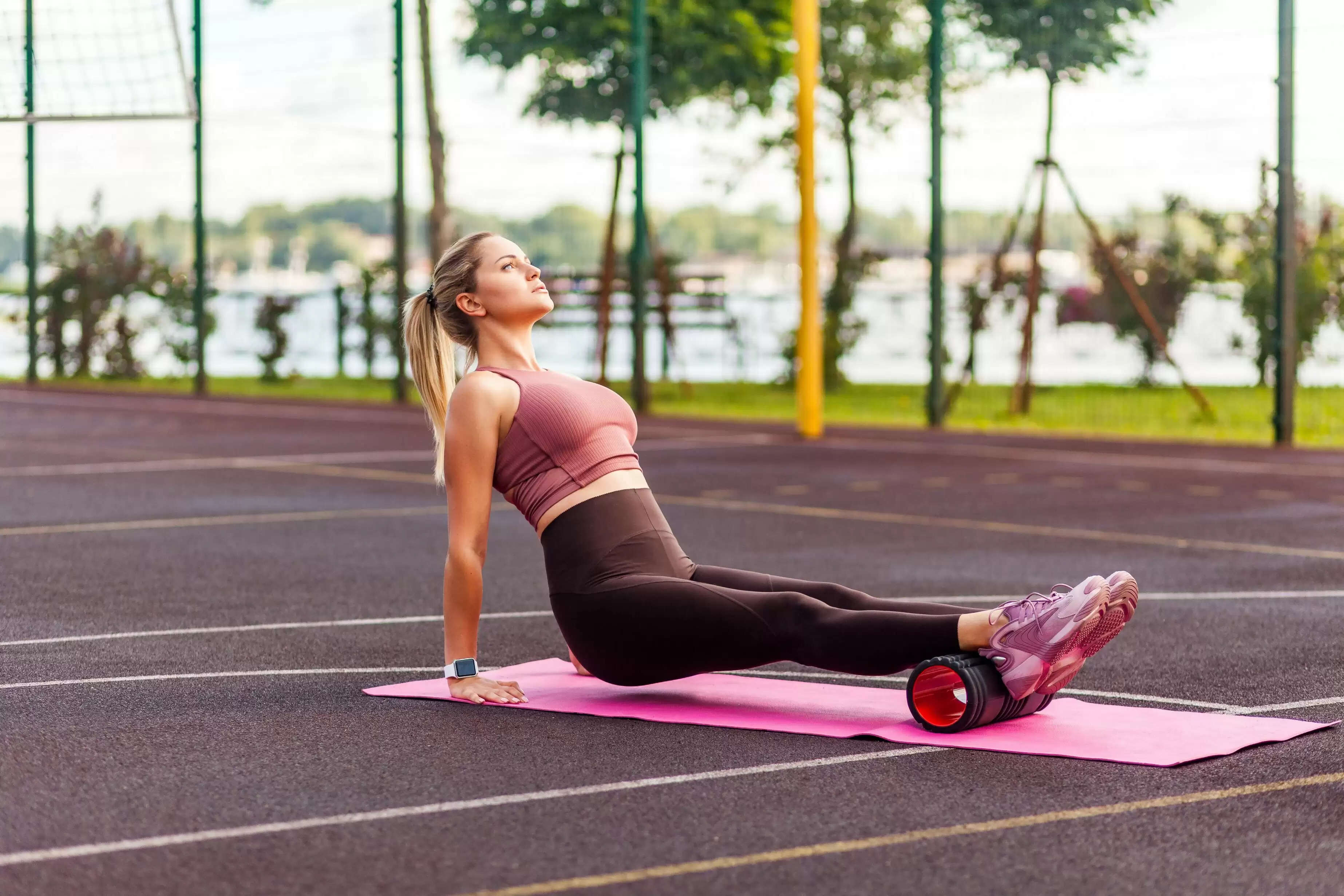Foam Rolling: Benefits, Safety And All You Need To Know
Foam rolling offers many benefits such as addressing muscle tightness, improving blood circulation and increasing range of motion. Though, it is safe, certain precautions need to be taken.

Foam rolling is a technique known as self-myofascial release (SMR), which involves using a foam tube to address muscle tightness, soreness, and inflammation. It is also beneficial for enhancing your range of motion. The purpose of myofascial release is to alleviate pain and discomfort by applying pressure to tight or sore areas, promoting relaxation in those regions. It helps to prepare the muscles and activate neuromuscular connections.
In addition to its benefits during workouts, foam rolling also holds significance in your post-workout routine. Many people often encounter soreness and tightness after exercising. Using a foam roller after your workout can provide immediate relief for acute pain. However, limited research exists regarding the potential of foam rolling to alleviate delayed onset muscle soreness (DOMS), which is the pain that typically arises one to two days after a workout.
Is foam rolling safe?
Foam rolling is generally considered safe for individuals who experience muscle tightness or engage in regular exercise. However, it is important to avoid foam rolling if you have a significant injury such as a muscle tear or fracture, unless you have received clearance from a doctor or a physical therapist.
Furthermore, it is advisable to refrain from rolling over small joints like the knees, elbows, and ankles, as this can potentially lead to hyperextension or damage. When foam rolling the legs, it is recommended to roll out the calves first and then the quadriceps separately, while avoiding the area around the knees.
Foam rolling benefits
Relieving muscle discomfort
Foam rolling offers potential benefits for alleviating muscle soreness and decreasing inflammation.
A study has found that foam rolling post-workout can aid in reducing delayed-onset muscle soreness
Compared to individuals who exercised without foam rolling, participants in the study experienced a notable decrease in delayed-onset muscle soreness. Furthermore, they exhibited improved physical performance compared to those who did not incorporate foam rolling.
Blood circulation
Rolling on the foam enhances blood circulation to the targeted tissues. This can be especially beneficial for fascia, tendons, and ligaments, as they often receive limited blood flow. By increasing blood circulation, the delivery of vital nutrients improves, thereby enhancing functionality and aiding in the recovery process.
Enhances range of motion
While there is some indication that foam rolling can enhance range of motion, further investigation is required. Range of motion plays a vital role in flexibility and performance. A study suggests that a combination of foam rolling and static stretching yielded the best results in increasing range of motion, in comparison to static stretching or foam rolling alone.
Reduces cellulite
Claims have been made by certain foam rolling product providers that their products can assist in loosening and breaking up fascia, which are the body's connective tissues that contribute to the visibility of cellulite. Although foam rolling may offer a temporary smoothing effect on the skin, there is presently no scientific evidence supporting its ability to permanently diminish cellulite.
Back pain
Foam rolling can be an effective method for alleviating body pain, including back pain. It has the potential to alleviate tension in the back as well. However, it is crucial to exercise caution when using a foam roller on your back. Careless usage can result in further strain or injury to your back.
To effectively use a foam roller for lower back pain relief, position the roller vertically in line with your spine. Slowly roll the roller from side to side, following the alignment of your spine. This technique is preferable over using the roller horizontally, as it can cause your back to arch and lead to strain.
Alternatively, you can also try lying on a foam massage ball or a tennis ball to target and release knots in your back.
Fibromyalgia
The use of SMR (Self-Myofascial Release) techniques has demonstrated encouraging outcomes in alleviating fibromyalgia symptoms. According to a study, people diagnosed with fibromyalgia, and who engaged in foam rolling for a duration of 20 weeks reported notable improvements. These participants experienced reduced pain intensity, fatigue, stiffness, and depression compared to those who did not attempt SMR techniques. Furthermore, they noticed an increase in their range of motion.
Relaxation
Foam rolling is often perceived as a way to relax by many individuals. It involves targeting muscle tightness, which can potentially lead to a decrease in tension and a sense of calmness. However, the evidence supporting the direct relaxation benefits of foam rolling remains limited.
Conclusion
Using a foam roller before your workout can be a beneficial method for relieving muscle tension, particularly if you still have residual tension from previous exercise sessions. By including a foam roller in your warm-up and cooldown regimen, you may experience reduced soreness in the days that follow.
Foam rolling can also be advantageous if you have a sedentary job or experience general discomfort and body aches. Remember to consult your doctor before introducing any new tools into your daily routine.
Disclaimer: The above content is for informational purposes only and should not be used as a substitute for the advice of a qualified physician or doctor. The Company does not vouch for or endorse any of the above content, and disclaims any and all warranties, express or implied, relating to the same..png)